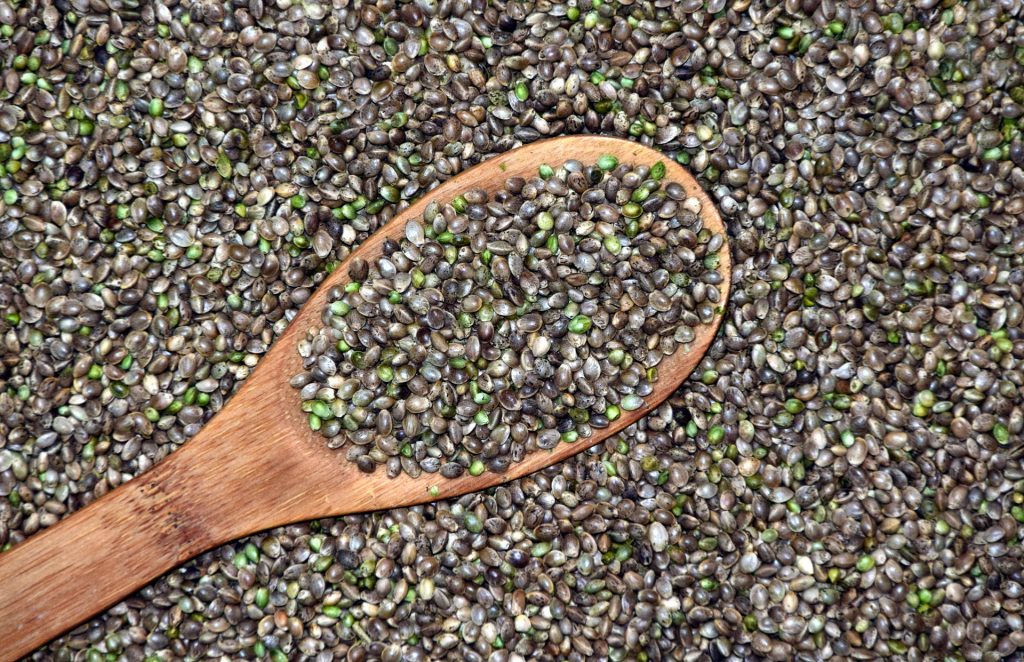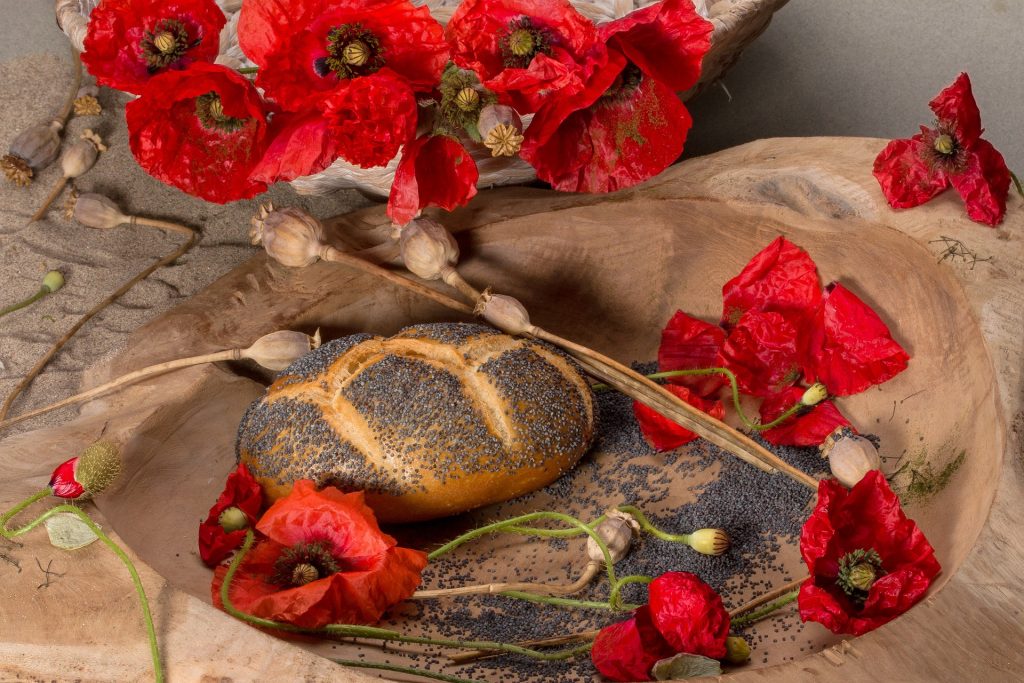
Quinoa
A native of the Andes, the quinoa, is considered a pseudocereal, has nutritive values compared to breast milk, very rich in proteins. Its gluten-free nutritional properties, of which 18 amino acids are essential to the organism, considered a superfood, it helps in the recovery of tissues and cells of our body. An importance that the United Nations Food and Agriculture Organization decided to highlight in 2013, declaring “Quinoa’s international year”. Considered by the Academy of Sciences of the United States the best food of plant origin for human consumption, including the feeding of the astronauts of NASA that go on very long trips.
The quinoa has a delicate taste, a little nutty and its color depends on the variety, it can be transparent yellow, orange, pink, red, purple or black. This can be consumed through the seed, flour or in flakes and although difficult to find, the leaves of the quinoa plant are edible, with a flavor similar to the leaves of spinach or beet. The consumption of quinoa can also cause changes in the gastrointestinal level with an impact on the absorption of some nutrients, to avoid this, just soak the quinoa before cooking it.
Among the benefits to the human body stands out the regularization of the intestine, muscle fibers, fighting urinary stresses, liver, the risk of osteoporosis, cholesterol, increases the disposition and helps prevent degenerative imbalances.

Flax
Flaxs is native of Asia, but today it is used throughout the planet because it is considered a functional food, due to its properties (nutritional and preventive thanks to anti-oxidant and anti-degenerative compounds). Flax can be consumed whole or ground (flour or bran) and can be added daily in food or through flaxseed oil. There are two types of flax, the brown and golden, but the nutrients of both are particularly important for omega 3, 6 and 9. A common presence in our diet helps to control weight, cholesterol, diabetes, inflammations, intestines, bones and prevents degenerative imbalances (breasts and prostate).
The high fiber content makes experts not recommend flaxseed to children under six months or to people who have inflammatory stresses in the intestines. In case of doubt or fear you should always consult a nutrition expert.

Pumpkin
If by opening a pumpkin for cooking you have a habit of throwing away the seeds, know that you are discarding a source of polyunsaturated fats, vitamins, fibers, and proteins. And it is still an alkalizing of the pH of our body. All foods that have the so-called seed, in practice confer an antioxidant, anti-inflammatory and diuretic power (prevents kidney stone), boosts the immune system, protects against anxiety, insomnia, osteoporosis, diabetes and, blocks negative stresses or degenerative imbalances.

Hemp
It is the marijuana plant seed but without the concentration of the psychoactive substance tetrahydrocannabinol (THC). Its consumption is already millenarian and in China it staves off hunger to many people, being still today possible to buy it in cinemas, seeds of hemp toasted, similar to the traditional popcorn. It is considered a superfood because it contains 21 amino acids, nine of which the human body can not produce. Rich in minerals, vitamins, fibers, and fats, essentially unsaturated (omegas 3 and 6).
The seeds can be eaten raw, next to other foods in cooking, germinated, transformed into hemp milk or tea. Fresh hemp leaves can also be consumed in salads. In products, hemp can be found in powder, flakes, tofu, cream, oils, flour, cakes, ice cream and even non-edible products such as beauty, textile or paper oils.
In human nutrition, its nutrients help to protect cardiovascular imbalances, diabetes, and obesity.

Chia
It is a plant native of Central America, from countries like Guatemala and Mexico, available on the market through grain, flour or oil that can be added in daily food, such as salads, yogurts, juices, cakes, among others.
Chia seeds are rich in polyunsaturated fats, fiber and calcium that help our body to control diabetes, control weight, improve intestinal transit, reduce cardiovascular stress, prevent the onset of degenerative imbalances and prevent aging.
It should be noted, however, that chia seeds should be soaked or eaten in a small quantity, preferably at lunch, to reduce the risk of intestinal and intestinal obstruction stress due to the possibility of fermentation.

Sunflower
Originally cultivated by the indigenous peoples of North America, this plant that rotates at the whim of the sun can reach the three meters of height. Its greatness is also manifested in its nutrients: a source of fiber, protein, minerals, high content of vitamins, in addition to polyunsaturated fats (omega 3 and 6). Properties that allow you to reduce cholesterol levels, strengthen the immune system, reduce the risk of degenerative imbalances, strengthen the nervous system, is a muscle relaxant, helps control premenstrual tension, recovers from inflammatory processes or stops aging, among other negative stresses.
The sunflower can be consumed through grain, in appetizer, in cooking dishes or in oil.

Poppy
Sensitive and addictive, this mythical plant that allowed developing substances like opium, morphine or heroin, also has medicinal powers through its seeds. These are easy to find in a specialty store because farmers dry and treat them so they can not germinate because being barren can no longer be made into products that are prohibited by law. The seeds, when consumed in grain, in flour, tea or oil, stop the stresses of anxiety and nervousness, act in the respiratory tract (indicated for cough, bronchitis, and asthma) or as an analgesic effect (toothache). Regular, intense and systematic consumption can lead to dependence due to the morphine substance.

Sesame
Oval and flattened in white, black, red or gold and with a slightly nutty taste, the sesame comes from Asia. This can be consumed through seed (hamburger bread), oil or olive oil.
Sesame seed is considered a super seed given its richness in proteins (it has 15 different amino acids), vitamins, minerals, among other nutrients. This seed helps activate the metabolism, strengthens bones, tendons, combats inflammation, controls blood pressure, reduces blood fat levels, curtails aging of the skin and has anti-degenerative properties, among other benefits.

Amaranth
Small round, hard and golden granules that have properties similar to the union of beans and rice. This super-seed, a pseudocereal, originating in Peru, has long been used by the Aztec people, is now also beginning to be rediscovered. Rich in protein, fiber, calcium, iron, phosphorus, and magnesium, amaranth still has a great asset: it has no gluten. Among its benefits are the reduction of blood pressure, cholesterol, improvement of bowel function, strengthening of the immune system and anti-degenerative properties.
But although it is recommended for anyone who is allergic to gluten, consumption of amaranth should be accompanied by a specialist in case of diabetic negative stresses, kidney problems or pregnancy. Its consumption is very practical as it can be added in salads, soup, juices, cooked in substitution of rice and beans or even as an appetizer like a popcorn.

Psyllium
It has a flea-like appearance, can be golden or black, and originates in Asia, India, and Pakistan. In a psyllium plant you can find 15 thousand seeds that appear in the market also in powder, capsules or oil. It is rich in fiber, essentially in the bark, it does not have gluten and it has a great capacity to retain water, therefore it is recommended to be very careful as it can obstruct the throat or the esophagus. Psyllium helps to control cholesterol, diabetes, eliminates toxins, balances the intestinal system (hemorrhoids and constipation) and reduces appetite. Contraindications include intestinal stress or pregnancy.
This text is an awareness. According to the season of the year and the moment in which you are, it is up to each one to feel if they should consume this food. The dosage and frequency depend on the nature and physical condition of each Human Being.
Feel more about Seeds in:
How and when should I eat seeds
Seeds are the source of life, but be careful of its energy validity




